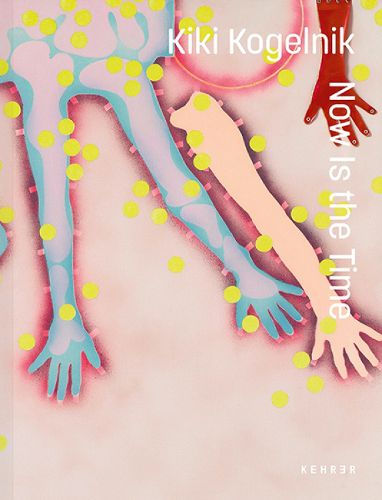Readings Newsletter
Become a Readings Member to make your shopping experience even easier.
Sign in or sign up for free!
You’re not far away from qualifying for FREE standard shipping within Australia
You’ve qualified for FREE standard shipping within Australia
The cart is loading…






Having completed her studies at the Academy of Applied Arts and the Academy of Fine Arts in Vienna in the 1950s, Kogelnik was part of the young St. Stephan Group. After extensive travels through Europe and through her acquaintance with Sam Francis, Kogelnik relocated to New York in 1962, where she began to work within the newly forming Pop Art movement and developed friendships with artists such as Roy Liechtenstein, Claes Oldenburg and Carolee Schneemann. This extremely incisive period at the beginning of the 1960s also signified a reorientation in her artistic work - the works created during this phase form the crucial centre of the exhibition. The artist explicitly addressed her interest in, but also her critical attitude towards, consumer society, technical progress, medicine and diagnostics, and the (female) body and its implications, as well as the reality of her own life as an artist, mother, and wife, starting in the early 1960s - long before today's omnipresent discourses on gender equality, medical ethics, the digital age, and sustainable lifestyles. With humour, sharp punchlines, the bold aesthetic and sense of mission of pop and new materials such as vinyl, Kiki Kogelnik finds her unique way and, from today's perspective, proves to be one of the most diverse and independent examples of early postmodern art.
$9.00 standard shipping within Australia
FREE standard shipping within Australia for orders over $100.00
Express & International shipping calculated at checkout
Having completed her studies at the Academy of Applied Arts and the Academy of Fine Arts in Vienna in the 1950s, Kogelnik was part of the young St. Stephan Group. After extensive travels through Europe and through her acquaintance with Sam Francis, Kogelnik relocated to New York in 1962, where she began to work within the newly forming Pop Art movement and developed friendships with artists such as Roy Liechtenstein, Claes Oldenburg and Carolee Schneemann. This extremely incisive period at the beginning of the 1960s also signified a reorientation in her artistic work - the works created during this phase form the crucial centre of the exhibition. The artist explicitly addressed her interest in, but also her critical attitude towards, consumer society, technical progress, medicine and diagnostics, and the (female) body and its implications, as well as the reality of her own life as an artist, mother, and wife, starting in the early 1960s - long before today's omnipresent discourses on gender equality, medical ethics, the digital age, and sustainable lifestyles. With humour, sharp punchlines, the bold aesthetic and sense of mission of pop and new materials such as vinyl, Kiki Kogelnik finds her unique way and, from today's perspective, proves to be one of the most diverse and independent examples of early postmodern art.